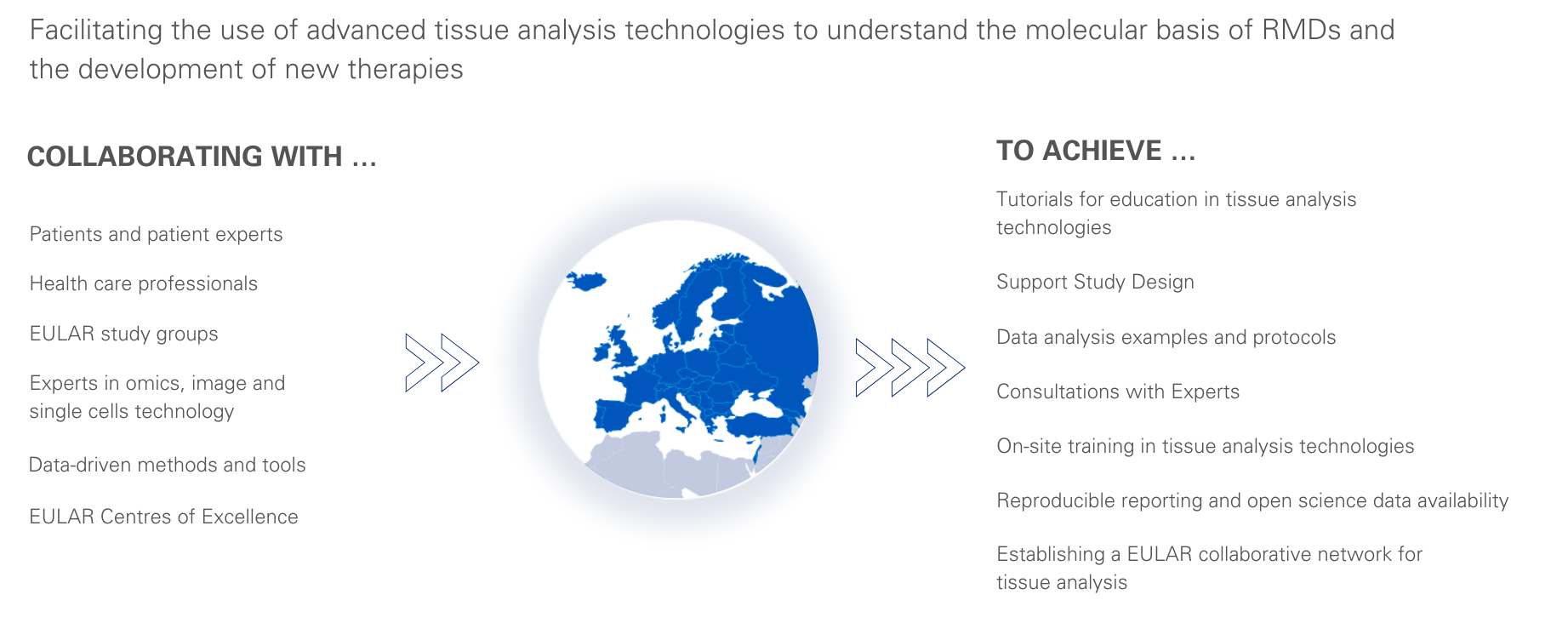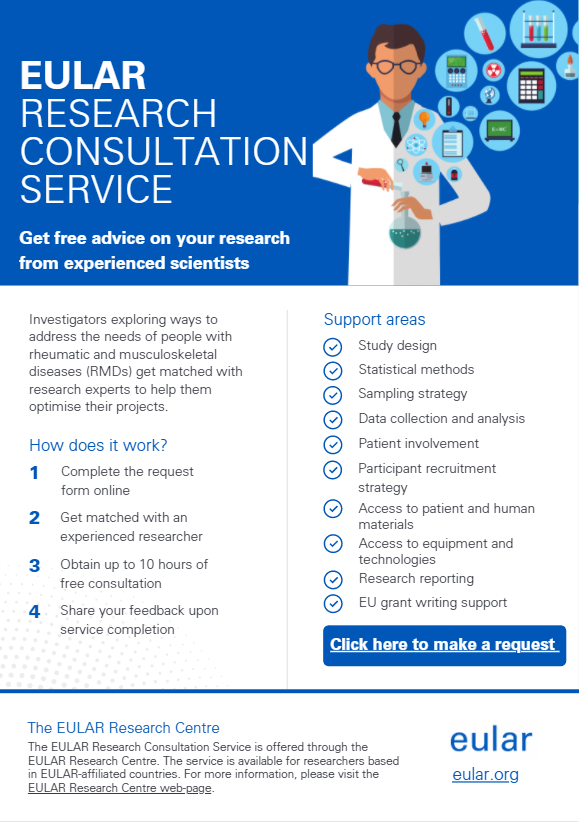EULAR Advanced Tissue Analysis initiative (ATAi)
About the Initiative
The EULAR Advanced Tissue Analysis initiative (ATAi) is a platform for learning – training – supporting – performing different experimental approaches aiming to understand the molecular basis of rheumatic and musculoskeletal disease (RMDs) and the development of new therapies.
ATAi aims to:
Develop a sharing and collaborating advanced tissue analysis technology community: research centres that are part of the EULAR ecosystem have already invested in many different technologies and platforms but will benefit from increased critical mass of expert research in a collaborative network setting.
Raise awareness of the potential and limitations of advanced tissue analysis technology to answer innovative RMD research questions by providing education, reference resources and expert hands-on training.
Boost RMD research that leverages advanced tissue analysis technology (develop high-quality grant proposals, support accurate usage of the technology/methods leading to impactful research and publications) by applying the strengths of the new community towards the wider spectrum of EULAR countries’ RMD basic and translational research teams.
EULAR ATAi is driven by the EULAR Basic and Translational Research Sub-Committee, led by the chair, Prof. Rik Lories (Professor of Rheumatology, KU Leuven, Belgium).
The ATAi platform: Supporting technologies for RMD tissue analysis
The EULAR Advanced Tissue Analysis initiative (ATAi) is a platform for learning – training – supporting – performing different experimental approaches aiming to understand the molecular basis of rheumatic and musculoskeletal disease (RMDs) and the development of new therapies.

Related Information
Sign Up to the EULAR Research Newsletter
To keep up to date with EULAR and developments around the EULAR Research Centre, sign up to receive the Newsletter.
Subscribe here
Related News Stories
- Read more about the EULAR Research Centre: Levelling the playing field of RMD research across Europe to address patients’ needs: the emerging EULAR Research Centre
-
EULAR Launches Impact of RMDs Survey
-
EULAR Launches RheumaFacts
The EULAR Research Consultation Service
How does it work and what can you get?
See infographic
EULAR Research Interview Series
- Opportunities and challenges in rheumatology research in Hungary
- EULAR’s Scientific Training Grant Helps Slovenian Master Student Develop Critical Research Skills in Experimental Rheumatology
- Why mentoring matters: EULAR explores mentoring needs among RMD researchers

